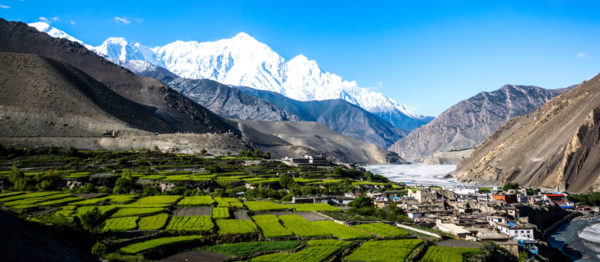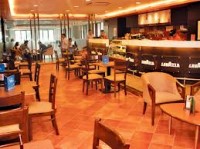Trek to Mustang
A beautiful place situated on the western end of Nepal, Mustang is an extraordinary place for the trekking from where you could see the Himalayan peaks not only on the northern side, like we are used to, but also on the southern horizon. The splendid Annapurna I, the wide snow capped Tilicho peak, Gangapurna, Thorung Peak and the view of the north face of Nilgiri that never leaves you throughout the entire trek.
To the northern side of the place lay the light and ochre of the Kali Gandaki canyon while the dark green vegetation with threadlike waterfalls and layers of mountains disguised by gauze of rain of the rainy side of Mustang lay on the west. One of the amazing facts about the place is that it once formed the shores of Laurasia, the continent that the India landmass collided with after breaking away from Africa some 75 million years ago. Along the banks of Kali Gandaki in the region, ammonite fossils and crustaceans that once lived at the bottom of the ocean can be found now on the river bed at nearly 4,000 m above the sea level.

This place not only has geographical and archaeological significance but also have cultural and spiritual significance. The place have Neolithic caves (that are believed to be centuries old and probably inhabited by the very first human civilization) carved into the soft vertical firm walls of canyons along with the historic monasteries and sacred springs and lakes that makes this valley holy by a perfect blend of geology and mythology from pre-Vedic times. The Hindus as well as the Buddhist sages of the Himalayas have come here for meditation and it is believed Milarepa, the poet saint, passed through this land singing and preaching. Moreover, the introducer of Buddhism to Tibet, Guru Rinpoche is said to have chased a demoness from the Samye monastery near Lhasa to Mustang and then slayed her here. It is said to be her blood which has made the surrounding cliffs red and the exact spot where it took place 1,300 years ago is called Gekar, the oldest Tibetan Buddhist shrine in Nepal.
Some 800 years ago, Ame Pal established the kingdom of Mustang and the ruins of the fortress could be still found here, near Lo Manthang, where his 25th direct descendant, Jigme Prabal Bista still rules. Mustang came to be a part of Nepal, almost by an accident after King Prithvi Narayan Shah conquered Jumla in the late 18th century. Mustang remained as a ‘restricted area’ until the demographic government in Kathmandu opened up the area to limited tourism in 1992.
Government’s decision to open up Mustang as a tourism destination will prove to be helpful and has made the people hopeful about the construction of the road in the area while others fear it might cause the place to lose its heritage and end up being a tourist hang out and nothing more. Nevertheless, Mustang is a splendid place for a trek if you love to visit a place that has rich cultural and natural significance as well as geological and archaeological values.





